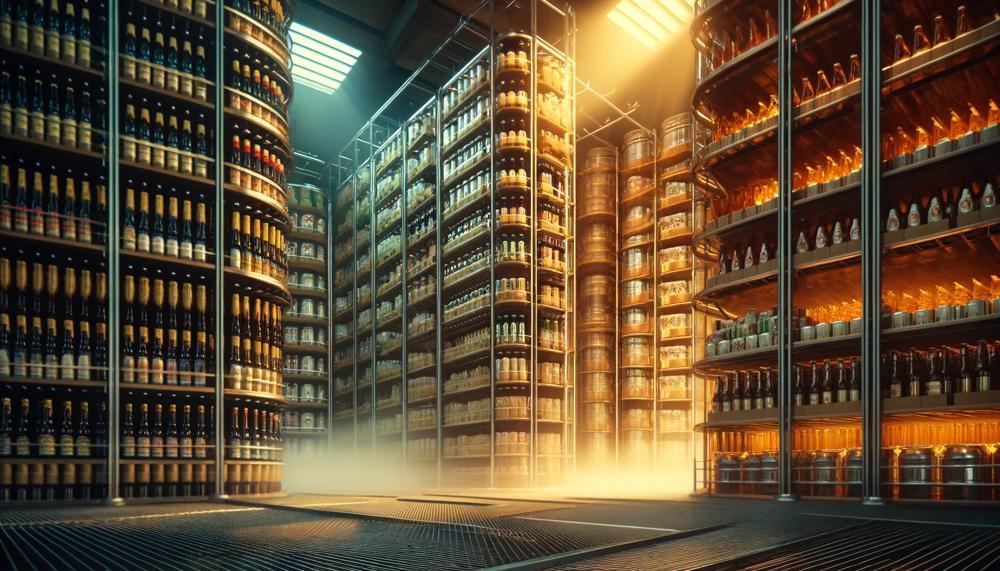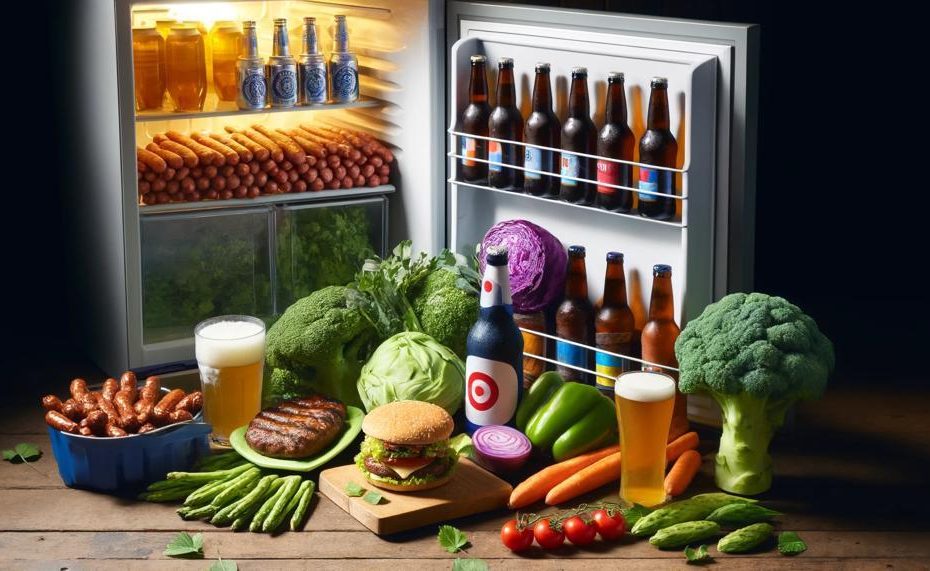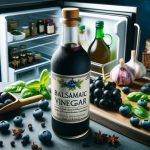When it comes to the question of whether beers have to be refrigerated, the answer is not as straightforward as you might think. While refrigeration is generally recommended for optimal storage, most beers can handle a couple of temperature changes without a significant impact on flavor if consumed within a reasonable timeframe.
So, do beers have to be refrigerated?
For draft beer and many craft beers, refrigeration is mandatory, although it is the ideal storage condition for all beers. Storage without refrigeration may lead to aging and the development of bad tastes.
Unopened beer can last eight months in the refrigerator or six months at ambient temperature. 45 to 55 degrees Fahrenheit is the ideal temperature range for bottled beer. Bottles should be kept upright.
To preserve taste, you should store beer in the refrigerator as soon as you get home. Beer may be severely harmed by heat. In a hot automobile, for instance, a beer that lasts a year in the refrigerator would only last three days. The darkest, coldest area of your home, such a pantry or closet, is where you should store beer.
Refrigerating all beers is not necessary. If stored in a cold, dark spot such as a closet or basement, macro lagers such as Budweiser, Miller Light, and Coors may survive for many months or perhaps a year.
A temperature of 80 degrees or above will spoil beer.
Contents
- 1 How Temperature Affects Beer
- 2 Beer Storage Process
- 3 The Myth of Ruined Warm Beer
- 4 Light as the Culprit
- 5 The Shelf Life of Hoppy Beers
- 6 Best Practices for Beer Storage
- 7 Debunking the Widespread Notion
- 8 The Importance of Cooler Beer
- 9 The Role of Refrigeration in the Brewing Industry
- 10 The Importance of Proper Glassware
- 11 Promoting a Balanced Perspective
- 12 Conclusion
Key Takeaways:
- Beer is more sensitive to temperature swings if it is hoppy.
- A few temperature changes won’t significantly affect the flavor of most beers consumed within 30-45 days.
- Extreme temperature fluctuations and exposure to light are more likely to negatively affect beer.
- Refrigeration is generally recommended for optimal freshness and flavor.
- Proper glassware can enhance the aromas and flavors of different beer styles.
How Temperature Affects Beer
Temperature fluctuations can have a significant impact on the flavor and stability of beer. When a cold beer is subjected to quick temperature changes, such as going from cool to warm rapidly, it can result in noticeable changes to the beer’s taste. However, if a beer warms up gradually and is then cooled down again, it will not skunk.
Skunking, which is characterized by a foul odor and flavor, is primarily caused by exposure to light rather than temperature fluctuations. Therefore, as long as the beer is protected from light, a few temperature changes within a reasonable range will not ruin it.
It’s important to note that extreme heat, especially above 80 degrees Fahrenheit, can indeed ruin a beer. Storing beer in areas with high temperatures, such as hot garages or in direct sunlight, should be avoided to maintain the quality and taste of the beer.
Beer Storage Process
The journey of a beer before it reaches your fridge is a fascinating one, involving various storage conditions. Craft beers, renowned for their unique flavors and aromas, are typically stored at room temperature at the brewery. They are carefully crafted and meticulously aged, allowing the flavors to develop and mature. After the brewing process, these beers are shipped to distributors, where they continue to be stored in warehouses.
These warehouses may have varying temperatures, depending on factors such as location and climate. From there, the beers are sent to stores and restaurants, where they are finally refrigerated for the first time. It is at this point that you, the consumer, come into the picture. When you purchase a beer, it has already undergone a journey and experienced temperature variations along the way.
While it is generally recommended to refrigerate beer to maintain its freshness and optimize the taste, the beers you buy have already passed through different storage conditions. Therefore, if you choose to buy refrigerated beer and store it outside the fridge until you’re ready to enjoy it, rest assured that it won’t significantly harm the beer’s quality or flavor.

The Myth of Ruined Warm Beer
There is a common misconception that warm beer is ruined if it was previously refrigerated. However, this belief is far from the truth. Contrary to popular belief, beer can withstand being warm and then cooled down again without any major negative consequences. It’s important to debunk this myth and provide a clearer understanding of how temperature affects beer.
Warm beer is often associated with a negative drinking experience. Many believe that once beer has been chilled, allowing it to warm up will result in a ruined product. But in reality, warm beer won’t adversely affect its flavor or quality.
The real concern lies in extreme temperature fluctuations. Going from boiling hot to freezing cold can have a considerable impact on the taste of beer. These unfavorable conditions can lead to undesirable flavors and even potential explosions. Therefore, it’s crucial to avoid leaving beer in a parked car under the sun or subjecting it to rapid temperature changes.
Beer, when properly stored and handled, can tolerate being warm and then cooled down again without significant consequences. It’s only when exposed to extreme temperature swings that ruin becomes a possibility.
So the next time someone tells you that warm beer is undrinkable, you can confidently correct the misinformation. Remember that beer’s freshness and taste are more affected by factors such as light exposure and extreme temperature fluctuations, rather than simply being warm after refrigeration.
Light as the Culprit
When it comes to skunky beer, it’s not temperature changes that are to blame, but rather exposure to light. Specifically, ultraviolet light can trigger a chemical reaction in beer that results in the unpleasant skunky odor and taste. To minimize this risk, many beer bottles are crafted from dark glass or stored in cans, both of which help to reduce light exposure. Therefore, it’s crucial to keep beer away from direct sunlight.
The Shelf Life of Hoppy Beers
When it comes to hoppy beers, their shelf life is relatively shorter compared to other types of beer. It is generally recommended to consume hoppy beers within 30-45 days of purchase for the best flavor experience. The reason behind this recommendation lies in the nature of hop flavors and aromas, which tend to fade over time.
Storing hoppy beers in a cool and consistent temperature can help extend their shelf life and preserve their hoppy character. However, a few temperature changes within a short period of time, such as going from cold to room temperature and back, will not significantly affect the flavor if the beer is consumed relatively quickly.
To showcase the impact of temperature changes on hoppy beers, consider the following examples:
Example 1: I recently purchased a hoppy IPA and accidentally left it in my car for a couple of hours on a warm day. When I finally retrieved it and put it back in my fridge, the beer still tasted great. The hop flavors were intact, and I didn’t notice any negative effects from the temperature fluctuation.
Example 2: My friend had a similar experience with a hop-forward pale ale. The beer had been stored at room temperature in a cabinet before he placed it in the refrigerator. Despite the temperature change, the beer retained its hoppy aroma and taste.
These examples demonstrate that while hoppy beers benefit from stable temperatures during storage, minor temperature changes within a reasonable timeframe won’t significantly impact the flavor profile. As long as hoppy beers are consumed relatively quickly, their hop flavors and aromas will remain enjoyable.
Factors influencing the shelf life of hoppy beers:
- The hop varieties used in the beer
- The brewing process and recipe
- The packaging and storage conditions
Each of these factors can affect the stability and longevity of hop flavors and aromas in the beer.
Best practices for enjoying hoppy beers:
To make the most of hoppy beers and ensure an optimal flavor experience, follow these recommendations:
- Consume hoppy beers within 30-45 days of purchase.
- Store hoppy beers in a cool, consistent temperature, if possible.
- Avoid exposing hoppy beers to extreme heat or sunlight, as these can have a negative impact on the beer’s flavor.
- Pay attention to any specific storage recommendations provided by the brewery on the beer label or their website.
Hoppy Beers Shelf Life
| Beer Style | Shelf Life |
|---|---|
| India Pale Ale (IPA) | 30-45 days |
| Double IPA (DIPA) | 30-45 days |
| Pale Ale | 30-45 days |
| Imperial IPA | 30-45 days |
Keep in mind that the shelf life of hoppy beers can vary depending on the specific beer style, brewing techniques, and individual preferences. It’s always best to check the beer’s packaging or consult with the brewery for any specific recommendations regarding its shelf life.
Best Practices for Beer Storage
When it comes to beer storage, maintaining a cool and consistent environment is key for optimal freshness and flavor. While refrigeration is recommended, there are still some best practices to consider if immediate refrigeration is not possible.
Store in a Cool Location
Choose a storage location that is away from heat sources and direct sunlight. A cool, dark area like a basement or pantry is ideal for beer storage.
Avoid Temperature Fluctuations
Avoid exposing the beer to extreme temperature fluctuations, as this can impact its flavor and stability.
Rapid changes from cold to warm can have a noticeable effect on the beer, so aim for a consistent temperature.
Minimize Light Exposure
Light, especially ultraviolet light, can cause beer to become skunky. Keep your beer in a dark place or store it in brown or opaque bottles to minimize light exposure.
Consider Proper Stacking
If you’re storing bottled beer, make sure to stack them upright to prevent any potential leakage or flavor contamination.
This also helps maintain carbonation levels and prevents sediment from settling.
Store Beer at the Right Temperature
While refrigeration is ideal, storing beer at a cool room temperature (around 55°F) for a short period of time is generally acceptable. Just make sure to refrigerate it when possible to preserve its freshness.
Be Mindful of Storage Duration
Beer is best consumed within a certain timeframe to ensure optimal flavor. Check the expiration or “best by” date on the bottle or can, and aim to consume the beer within that period.
“Proper beer storage helps preserve its freshness and flavor. Remember to store beer in a cool, consistent environment, and minimize exposure to light and extreme temperatures.” – Beer Storage Expert
Debunking the Widespread Notion
There is a widespread notion among many beer drinkers that warm beer is unacceptable and should be avoided at all costs. However, this belief is not entirely grounded in factual information.
As long as you’re not exposing the beer to extreme temperatures or light, allowing a cold beer to warm up gradually and then cooling it down again will not ruin the beer. This is particularly true for beers that will be consumed within a reasonable timeframe, typically within 30-45 days.
The Importance of Cooler Beer
When it comes to enjoying a beer, keeping it cooler offers numerous benefits. Not only does cooler beer provide a more refreshing drinking experience, especially on a warm day, but it also plays a crucial role in maintaining the beer’s freshness and extending its shelf life.
By storing beer at a consistent cool temperature, you can preserve its flavors and aromas, ensuring that each sip delivers the optimal taste. The cooler environment helps slow down the oxidation process, which can negatively impact the beer’s quality over time. Additionally, cooler temperatures can help slow down the growth of bacteria and yeast, promoting a longer lifespan for your favorite brews.
While it’s not necessary to refrigerate every beer you have, especially if you plan to consume it within a short period, it is still a good practice to keep your beer cooler whenever possible. This can be easily achieved by storing your beer in a refrigerator, a dedicated beer cooler, or even a cool basement.
The Role of Refrigeration in the Brewing Industry
The brewing industry heavily relies on refrigeration for various crucial aspects of the beer production process. From maintaining consistent fermentation temperatures to cold-conditioning and storing essential ingredients like hops and yeast, refrigeration is a vital component for ensuring the quality and consistency of beer.
During the fermentation process, precise temperature control is essential to achieve the desired flavor profiles and ensure a successful fermentation. Proper temperature management allows brewers to control the yeast activity and optimize the production of flavors and aromas. Without refrigeration, the fermentation process would be significantly affected, leading to inconsistent results and potentially compromising the overall quality of the beer.
In addition to fermentation, refrigeration also plays a key role in cold-conditioning, a process where beer is subjected to lower temperatures for an extended period. Cold-conditioning allows the flavors and aromas of the beer to mature and develop, resulting in a smoother and more refined product. Through refrigeration, breweries can create the optimal conditions for this conditioning process, enhancing the overall flavor profile and drinkability of their beers.
Refrigeration is not only crucial for controlling temperature during production but also for storing ingredients like hops and yeast. These perishable items need to be kept at specific temperatures to maintain their freshness and effectiveness. Refrigeration systems in breweries provide the necessary cooling to preserve the quality and integrity of these vital brewing components.
However, it is important to note that once the beer leaves the brewery and enters the distribution and retail chain, the brewers have limited control over the temperature conditions it may encounter. Variations in temperature can occur during transportation, storage, and display, potentially impacting the quality and flavor of the beer. While breweries strive to ensure proper storage and handling throughout the supply chain, temperature fluctuations beyond their control can still occur.
Overall, refrigeration plays a critical role in the brewing industry, enabling brewers to achieve consistent fermentation, cold-conditioning, and ingredient storage. It is essential for maintaining the quality, flavor, and integrity of the beer. However, it is important to recognize that temperature variations may occur outside the brewery’s scope, potentially affecting the beer’s overall freshness and taste.
The Importance of Proper Glassware
While the focus of this article has been on refrigeration, it’s important to touch on the role that proper glassware plays in enhancing the enjoyment of beer. Choosing the right glassware can elevate the aromas and flavors of different beer styles, enhancing the overall drinking experience.
When it comes to beer, the type of glassware you use can make a difference. Different beer styles have unique characteristics, and the right glassware can accentuate those qualities. For example, a tall pilsner glass can showcase the effervescence and clarity of a crisp lager, while a tulip glass can capture the complex aromas of a Belgian ale.
Investing in appropriate glassware can elevate your beer-drinking experience, allowing you to fully appreciate the nuances of each brew.
Furthermore, certain glassware can also provide practical benefits when it comes to protecting beer from external factors such as sunlight and temperature changes. Insulated pilsner mugs, for instance, can help keep your beer cool for longer periods, ensuring that it stays refreshing until the last sip.
Proper glassware not only enhances the visual appeal and aroma of beer but can also contribute to maintaining its optimal serving temperature.
In order to assist you in choosing the right glass for different beer styles, here is a guide showcasing some common types of glassware and their respective beer styles:
| Glassware | Beer Style |
|---|---|
| Pint Glass | American Ales, Lagers |
| Tulip Glass | Belgian Ales, IPAs, Strong Ales |
| Pilsner Glass | Pilsners, Light Lagers |
| Stout Glass | Stouts, Porters |
| Goblet/Chalice | Belgian Strong Ales, Trappist Ales |
| Weizen Glass | Wheat Beers, Hefeweizens |
Remember, the glass you choose can have a significant impact on your overall beer-drinking experience. By using the appropriate glassware for each beer style, you can unlock the full potential of the flavors and aromas, ensuring that every sip is a delight.
Promoting a Balanced Perspective
When it comes to the refrigeration of beer, it’s important to take a balanced perspective. While refrigeration can help preserve the freshness and flavor of beer, a few temperature changes from cold to room temperature within a reasonable timeframe won’t significantly harm the beer. The key factor to consider is the avoidance of extreme temperature fluctuations and exposure to light, which can have a negative impact on beer quality.
Personal preference and individual circumstances should guide the decision of whether to refrigerate beer or not. Some beer enthusiasts may prefer their beer cold and prioritize maximum freshness, while others may find that the flavor nuances are more pronounced at slightly warmer temperatures. It’s essential to find a balance that aligns with your own taste preferences and drinking habits.
While refrigeration can help extend the shelf life of beer, it’s important to note that most craft beers are actually stored at room temperature throughout their journey from the brewery to the store. These beers have already experienced temperature variations, and a couple of additional changes from cold to room temperature are unlikely to have a significant impact if the beer is consumed within a reasonable time.
“Finding the right temperature for beer storage is about striking a balance between freshness and personal enjoyment. It’s not a one-size-fits-all approach.”
It’s also worth mentioning that the taste experience of beer can be influenced by factors other than temperature, such as glassware and serving techniques. Using the appropriate glassware for different beer styles can enhance the aromas and flavors, while proper pouring and serving techniques can optimize the taste experience. Remember that there are many elements that contribute to the overall enjoyment of beer, and temperature is just one piece of the puzzle.
Conclusion
In conclusion, refrigeration is generally recommended for optimal beer storage. However, it is important to note that it is not absolutely necessary for the beer to remain enjoyable. Most beers can handle a few temperature changes without a significant impact on flavor, especially if consumed within a reasonable timeframe.
It is crucial to be mindful of extreme temperature fluctuations and exposure to light, as these factors can negatively affect the beer. While refrigeration can help preserve beer freshness, personal preferences for serving temperature should also be taken into account. Striking a balance between ensuring beer quality and meeting individual preferences is key.
Remember, the primary concern is not whether the beer has been refrigerated or not, but rather how it has been handled throughout its journey and storage. Whether you choose to refrigerate your beer or not, it is essential to protect it from extreme temperatures and light exposure to maintain optimal flavor. Ultimately, the decision on how to store your beer should be based on a combination of best practices and your own preferences.
Source Links
- https://cheersall.com/blogs/news/you-cant-take-beer-out-of-the-fridge-after-its-been-cold
- https://vinepair.com/articles/does-beer-go-bad-left-out/
- https://www.reddit.com/r/beer/comments/oef93r/psa_if_you_buy_refrigerated_beer_and_let_it_warm/





